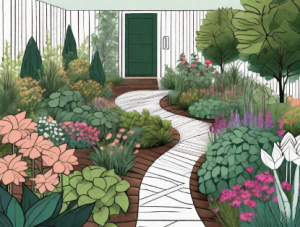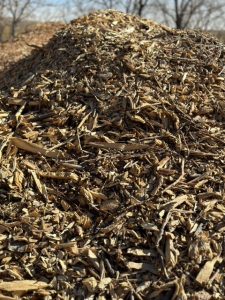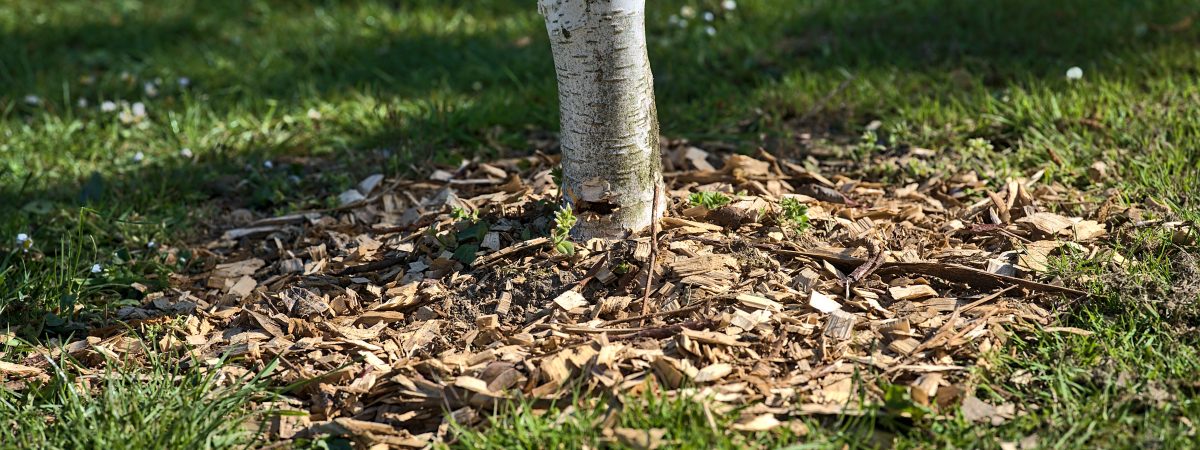Using Wood Chip Landscaping Material for a Beautiful Garden
In recent years, wood chip landscaping has gained popularity among garden enthusiasts. This natural material not only enhances the aesthetic appeal of your garden but also provides various benefits for the plants. If you’re looking to create a beautiful, sustainable garden, understanding the basics of wood chip landscaping is essential.
The Basics of Wood Chip Landscaping
Wood chip landscaping is a popular choice for many gardeners due to its versatility and functionality. By incorporating wood chips into your garden, you can enjoy a range of benefits that will enhance the overall health and appearance of your outdoor space.
What are Wood Chips Used For?
Wood chips are small pieces of wood that have been processed from various tree species. They can be obtained from local tree service companies or by chipping your own tree trimmings. These chips are an excellent landscaping material that can be used in a variety of ways to improve your garden.

Benefits of Using Wood Chips in Your Garden – Wood Chip Mulch (Bulk Delivery) Landscaping
There are several advantages to incorporating wood chips into your garden:
- Mulching: One of the primary benefits of using wood chips in your garden is their ability to act as a natural mulch. When spread over the soil surface, wood chips create a protective layer that helps retain moisture, regulate soil temperature, and suppress weed growth. This mulching effect is particularly beneficial in areas with hot summers or cold winters, as it helps to insulate the soil and protect plant roots.
- Soil Improvement: As wood chips break down over time, they release nutrients into the soil. This gradual decomposition process enriches the soil, improving its overall quality. The organic matter provided by wood chips enhances soil structure, promotes better drainage, and increases the soil’s ability to retain moisture. Additionally, the nutrients released by the wood chips nourish plants, supporting their growth and vitality.
- Erosion Control: Wood chips play a crucial role in preventing soil erosion. By reducing water runoff and maintaining soil structure, they help to stabilize the soil and prevent it from being washed away during heavy rain or wind. This erosion control is especially important on slopes or areas prone to erosion, as it helps to maintain the integrity of the landscape and protect against soil loss.
- Beneficial Microorganisms: Wood chips create a favorable environment for beneficial microorganisms, such as earthworms. These microorganisms play a vital role in maintaining soil health by breaking down organic matter, improving nutrient availability, and enhancing soil structure. By attracting and supporting these beneficial organisms, wood chips contribute to the overall well-being of your garden ecosystem.
In addition to these benefits, wood chips also add aesthetic appeal to your garden. They provide a natural and rustic look that can complement various garden styles, from formal to informal. Whether used as a pathway material, a mulch around plants, or as a decorative element in garden beds, wood chips can enhance the visual appeal of your outdoor space.
When using wood chips in your garden, it’s important to consider the type of wood being used. Some tree species, such as cedar or cypress, are more resistant to decay and can last longer as mulch. It’s also essential to apply wood chips at an appropriate depth to maximize their benefits without smothering plant roots.
Overall, wood chip landscaping offers a range of advantages that can significantly improve the health and beauty of your garden. By incorporating wood chips into your landscaping practices, you can create a sustainable and thriving outdoor environment that you can enjoy for years to come.
Choosing the Right Wood Chips for Your Garden
When it comes to selecting wood chips for your garden, there are several options to consider. Each type of wood chip has its own unique characteristics and benefits. By understanding these differences, you can make an informed decision that will best suit your gardening needs.
Types of Wood Chips
Let’s take a closer look at the different types of wood chips available:
- Hardwood: Hardwood chips, such as oak or maple, are known for their durability and slow decomposition rate. This makes them ideal for long-term landscaping projects where you want the chips to last for a significant period of time. Additionally, hardwood chips provide a natural and rustic look to your garden.
- Softwood: Softwood chips, such as pine or cedar, break down more quickly compared to hardwood chips. However, they offer excellent insulation and moisture retention properties. Softwood chips are particularly beneficial for gardens that require a higher level of moisture, such as those with delicate plants or in arid climates.
- Mixed Species: Mixed species wood chips combine the benefits of both hardwood and softwood chips. They offer a balance between durability and decomposition rate, making them a versatile choice for various gardening projects. Mixed species wood chips are often preferred by gardeners who want the best of both worlds.
Factors to Consider When Choosing Wood Chips
Before making a purchase, it’s important to consider the following factors:
- Availability: Determine the local availability of wood chip suppliers or explore the option of chipping your own tree trimmings. This can help you save money and ensure a sustainable source of wood chips for your garden.
- Aesthetics: Consider the color and texture of the wood chips. It’s important to choose wood chips that complement the overall aesthetic of your garden. Whether you prefer a natural and earthy look or a more vibrant and decorative appearance, selecting the right wood chips can enhance the visual appeal of your garden.
- Application: Evaluate the specific needs of your garden. Take into account factors such as the types of plants you have, soil conditions, and climate. For example, if you have plants that require a higher level of moisture, opting for softwood chips can help retain moisture in the soil. Understanding the specific requirements of your garden will ensure that you choose the most suitable wood chips.
By considering these factors and understanding the different types of wood chips available, you can make an informed decision that will benefit your garden in the long run. Remember, the right wood chips can not only enhance the aesthetics of your garden but also contribute to the overall health and vitality of your plants.
How to Apply Wood Chip Mulch to Your Garden

Preparing Your Garden for Wood Chips
Prior to applying wood chips, make sure to prepare your garden appropriately:
- Weed Removal: Remove any existing weeds or grass from the area where you plan to lay the wood chips.
- Soil Moisture: Ensure the soil is adequately moist before adding the wood chips to promote optimal plant growth.
- Plant Protection: Keep wood chips away from the base of plants or tree trunks to prevent moisture-related issues and pest infestation.
Step-by-Step Guide to Applying Wood Chips
Follow these steps to properly apply wood chips in your garden:
- Clear the Area: Remove any debris or existing ground coverings from the designated area.
- Layer Thickness: Apply wood chips in a layer with a thickness of 2 to 4 inches. Ensure the chips are evenly spread.
- Avoid Crowding: Leave space around plant stems to prevent moisture retention and potential disease or pest issues.
- Replenishment: Over time, as the wood chips decompose, replenish the layer to maintain the desired thickness.
Maintaining Your Wood Chip Landscape
Regular Maintenance Tips:
To keep your wood chip landscape in top condition, maintenance tips:
- Weed Control: Regularly inspect the area for weed growth and remove any unwanted plants.
- Moisture Monitoring: Check the moisture levels of the soil beneath the wood chips and irrigate as necessary.
- Layer Management: As the wood chips break down, add new chips to maintain the desired depth and maximize their benefits.
Troubleshooting Common Issues
Occasionally, you may encounter common issues with your wood chip landscape:
- Excessive Decomposition: If the wood chips decompose too quickly, add a fresh layer or consider using a more durable wood chip variety.
- Weed Growth: Monitor for weed growth and promptly remove any weeds to prevent competition with your plants.
- Pest Infestation: Regularly inspect your garden for signs of pests and take appropriate measures to control infestations.
Sustainability and Environmental Impact of Wood Chip Landscaping
How Wood Chips Contribute to Sustainability

Wood chip landscaping aligns with sustainable gardening practices in several ways:
- Recycling Organic Waste: Utilizing wood chips repurposes organic waste materials and reduces the volume of waste sent to landfills.
- Carbon Sequestration: Wood chips store carbon, helping reduce greenhouse gas emissions and combating climate change.
- Sustainable Material: Wood chips are a renewable resource, as they can be produced from trees grown specifically for this purpose.
Minimizing the Environmental Impact of Your Garden
To minimize the environmental impact of your garden, consider implementing the following practices:
- Local Sourcing: Source wood chips from local suppliers to reduce transportation-related emissions.
- Native Plants: Plant native species that require less water and maintenance, reducing the need for excessive resource consumption.
- Organic Gardening: Practice organic gardening methods, avoiding harmful pesticides and chemical fertilizers.
Wood chip landscaping is a versatile and sustainable option for creating a beautiful garden. By understanding the basics, choosing the right wood chips, and applying them correctly, you can enjoy the many benefits they provide. Regular maintenance and sustainable practices will ensure your wood chip landscape thrives while minimizing its environmental impact. Embrace this natural material and transform your garden into a captivating oasis.
Have wood chips delivered right to your property, school or community garden!

